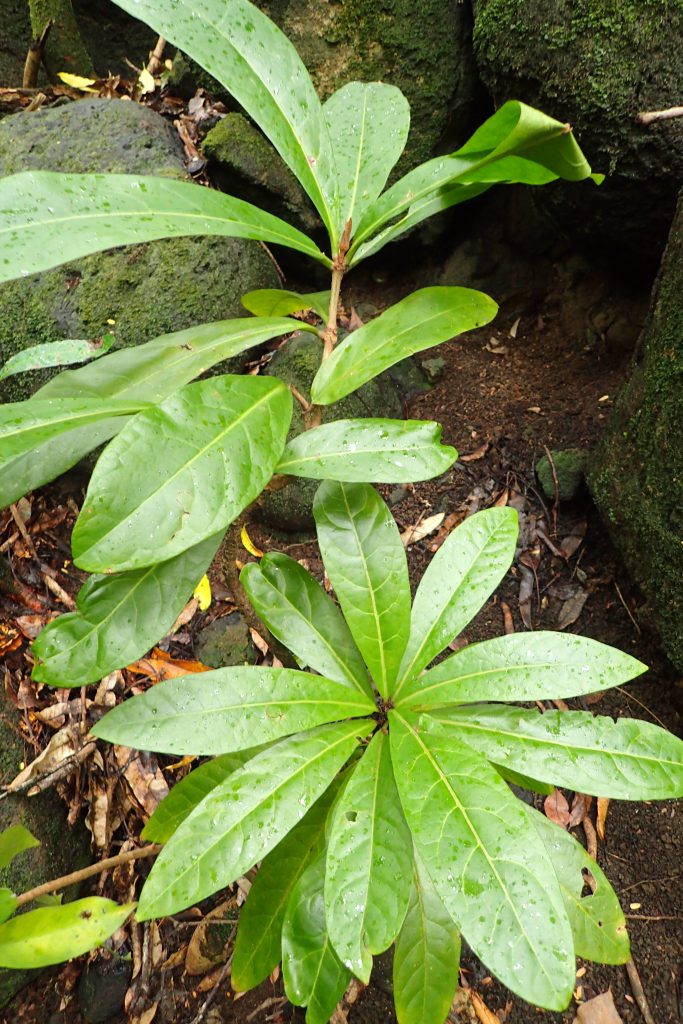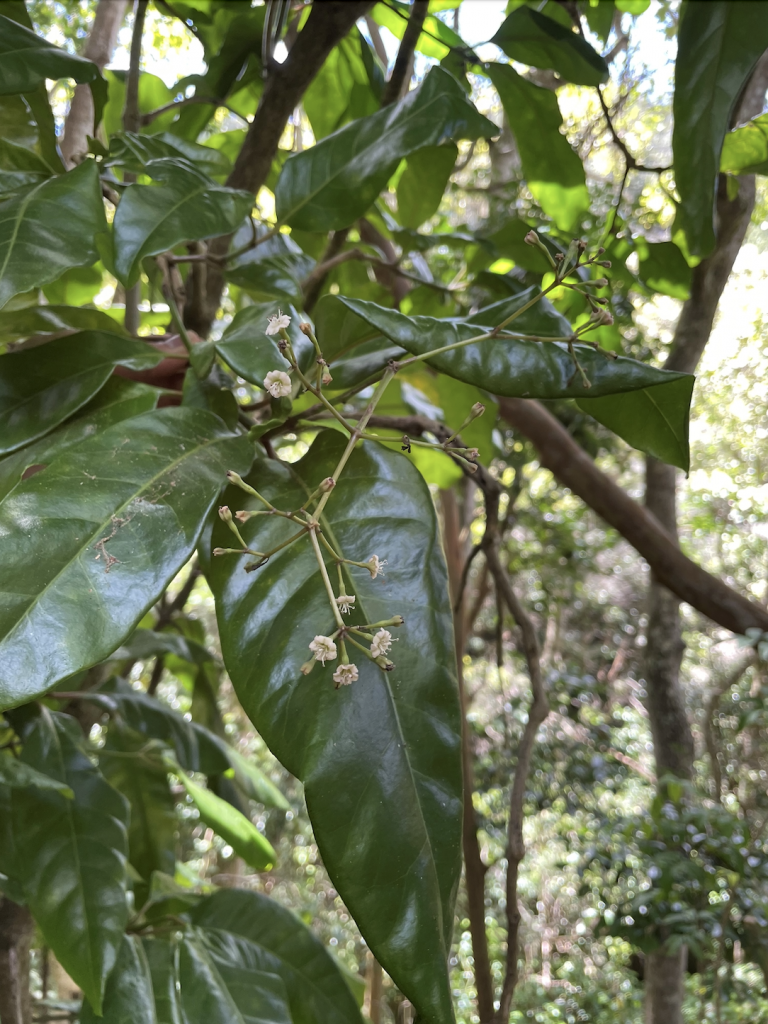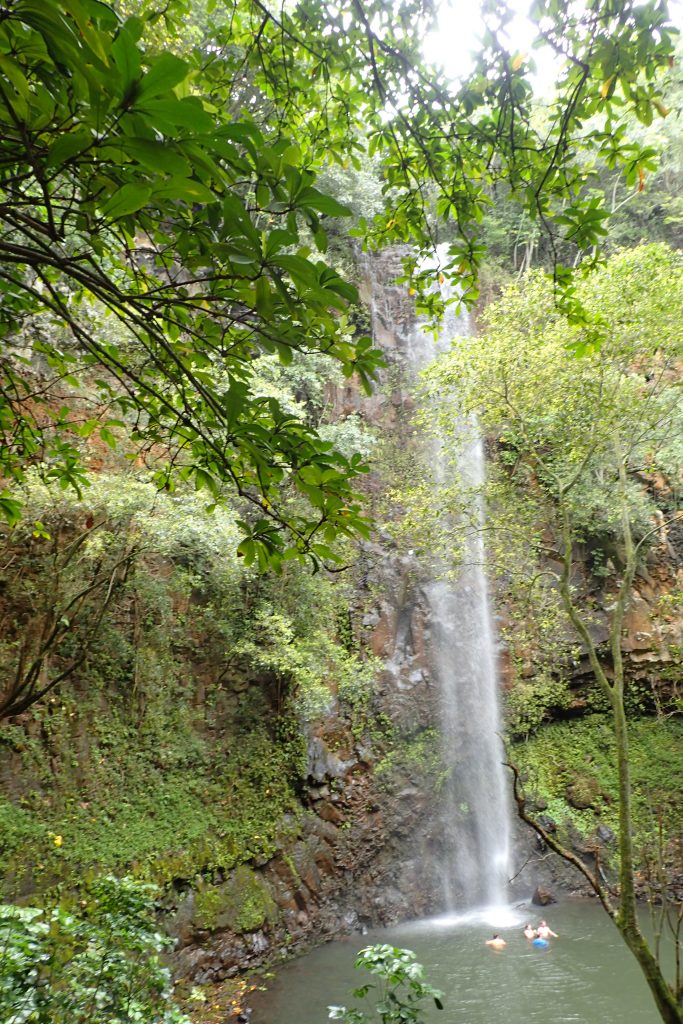Pāpala kēpau
Names
- ʻŌlelo Hawaiʻi: Pāpala kēpau
- Scientific: Ceodes umbellifera
Conservation Status
- Not sure
Species Information
Pāpala kēpau is endemic to Hawai’i and part of the Nyctaginaceae family. It is a small to medium sized evergreen tree that grows up to 15 m (49 ft tall), with up to 3 trunks, which are about 30 to 60 cm (12 to 24 in) in diameter. The tree flowers during the summer months from June to August. The fruit has a sticky coating that can trap small creatures such as birds, lizards, and insects. Traditionally, the trapped birds’ feathers were plucked. The sap and leaves were used as medicine and as glue to repair cooling implements (“Pisonia Sandwicensis,” 2021).
Distribution
Pāpala kēpau is found on all Hawaiian islands except Ni’ihau and Kaho’olawe.
Habitat
Pāpala kēpau is found in dry forests where it grows at altitudes of 610 to 752 m (2,001 to 2,467 ft). Pāpala kēpau can also grow in mesic forests.
Threats
- Competition with alien invasive plants
- Wildfire
- Consumption by feral ungulates
References & Additional Resources
“Native Plants Hawaii – Viewing Plant : Rockia sandwicensis”. nativeplants.hawaii.edu.
“Pisonia Sandwicensis.” Plant Pono, 7 Oct. 2021, https://plantpono.org/pono-plants/pisonia-sandwicensis-kaulu/.






